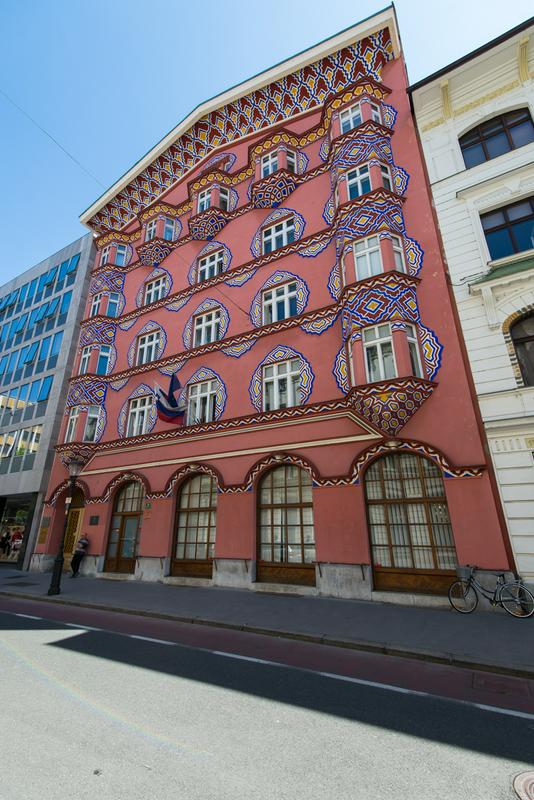
Despite its size, Slovenia has a rich architectural tradition. Some of the country’s architects, such as Jože Plečnik, have an international reputation. Less well-known is Ivan Vurnik, who combined folk designs with contemporary trends of his era and later became an early advocate of functionalism.
Born in 1884 into a wealthy family in the town of Radovljica, Vurnik went on to study architecture in Vienna, the destination of many Slovenians seeking a higher education at the time, and later continued his studies in Italy. He worked on several smaller projects before he was drafted to fight on World War I. Even though he served on the notorious Isonzo Front, he survived the war and became one of the country’s most promising architects.
Shortly after the war, Vurnik designed the Cooperative Business Bank on Ljubljana’s Miklošičeva Street. His design combined Art Nouveau influences, which had influenced him back in Vienna, with folk decorations created by his Vienna-born wife but based on traditional Slavic patterns.
The result was strikingly unique, and it became known as the “national style.” He went on to create a number of other buildings in this style, including the headquarters of the Sokol Gymnastics Association in Ljubljana and the National Home in Kranj. Along with his wife, Vurnik also brought his style to a number of books, which he helped to design.
In the years ahead, however, Vurnik began to move away from his national style and was one of the first architects in Slovenia to embrace functionalism.
He also founded a school of architecture – the nation’s first – at the University of Ljubljana and invited the famed Jože Plečnik to join the faculty. The two soon clashed and eventually became fierce rivals. Plečnik, who was committed to the classical architectural tradition, did not approve of Vurnik’s functionalism and encouraged students whom he considered to be too modernist to study under Vurnik instead.
Even though he began to devote most of his time to teaching, Vurnik still found the time to work on several projects. He designed housing for workers, a hotel, and swimming pool, the latter two in his native Radovljica. The pool’s graceful, almost modernist diving platform was considered one of his greatest achievements.
Today, little of the original pool remains, and the diving platform is merely a distant memory. Some of his other works have also been lost through the decades, while others were allowed to decay because of insufficient maintenance. It was only recently that Vurnik, who died in 1971, began to attract more attention for his groundbreaking national style and his later embrace of functionalism, both of which have made him one of Slovenia’s most interesting architects of all time.
Jaka Bartolj


































































